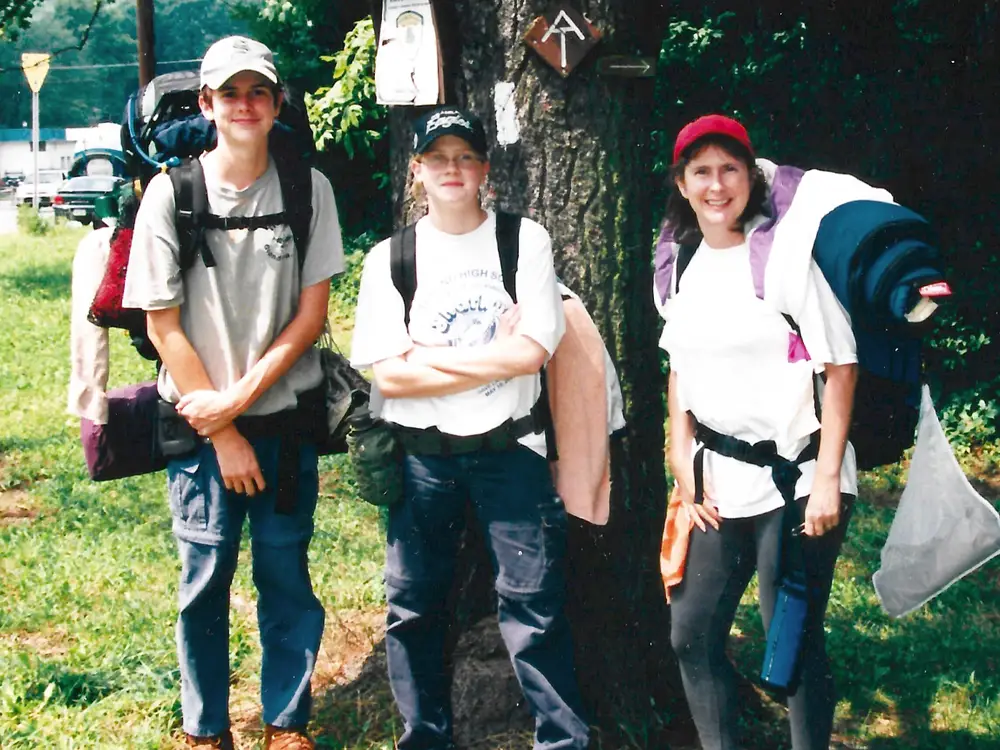I hiked the Appalachian Trail with my family of 4. We ran out of water on the second day and faced a dire situation.

The author (far right) and her two children while on a hiking trip.
Backpacking with children is great exercise. It gets them outside in nature and gives them a break from all the technology in their lives. My husband and I know the rewards of fresh air and exercise firsthand because we’ve gone hiking with our children for over 20 years.
Even though we’ve hiked with children before, one trip always stands out because backpacking a section of the Appalachian Trail was new for us.
As usual, we researched for our first three-day trek across the spine of the Appalachians, dissecting the maps and elevations. We found parking lots near the trail where we could leave a vehicle. We packed backpacks with what we thought we’d need as we climbed this rock-strewn trail.
We were prepared — or so we thought. I quickly realized we made one important error, which could’ve been very dangerous for my family.
We quickly realized we had packed all wrong
I had focused on canned foods for meals with pull-tops, thinking the cans could be used as “pots.” We also brought food pouches, salty nuts, and pretzels. We also had dry clothing, shoes, a tent, and sleeping bags.
We didn’t worry too much about hydration. We packed just enough, and the map clearly marked water sources. We planned to get to them before we ran out of water.
But with our heavy packs, my husband and I hiked more slowly than our 13- and 15-year-olds. We couldn’t make the eight miles needed to reach the water source that first day. Plus, our water calculations were off. We forgot to factor in how much additional water is needed when we exert and sweat in the heat.
Our water supply started running low. My husband and I rationed our water consumption. But by night, we all needed to drink less.
We felt the effects of dehydration
The next morning, everyone was sluggish. No one was hungry, and no one was sweating. We took tiny sips of the last of our water supply.
Slowly, we hiked, looking for that precious water source. It was a small stream by the trail. But when we found it, the level was low due to a drought. The bit of water left flowing looked too murky for us to try, no matter what the trail map said.
As a rule, hikers shouldn’t drink untreated wild water in streams unless the water source has been marked as “potable” or “drinkable.” Weather or unforeseen local conditions, such as animals or farms upriver, can change a drinking source. Even clear water may contain bacteria we can’t see that can cause diseases in people — especially young children.
We had researched how to purify water before we left. The Centers for Disease Control website says to boil water for a full minute before drinking or cooking with it. But there wasn’t enough water to boil from this small stream — not that we had the energy to try. We still weren’t eating.
With nothing left to do, we trudged forward as a family, helping each other as needed.
By noon, we found a narrow, gravel road crossing the trail. Thankfully, some “Friends of Appalachian Trial Thru-Hikers” left a water cooler jug at this junction. Eagerly, we filled our bottles, leaving enough for other hikers.
The Appalachian Trail map’s next water source for the section we hiked was a nearby campground. We filled our bottles without restrictions.
It was a valuable lesson
As we sat on the trail by the cooler and rehydrated, we realized water was more important than all the food and stuff we packed. Now, we understood our limits on how far we could hike in one day carrying our backpacks. Nutritious snacks are best to carry. Returning home, we researched online about water filtration kits.
We were ready the next time we backpacked the Appalachian Trail, and our packs were much lighter.
That second time, I was also armed with the knowledge that my family was strong enough to get through anything. As long as we stick together, we can survive any mistake we may make while traveling.






